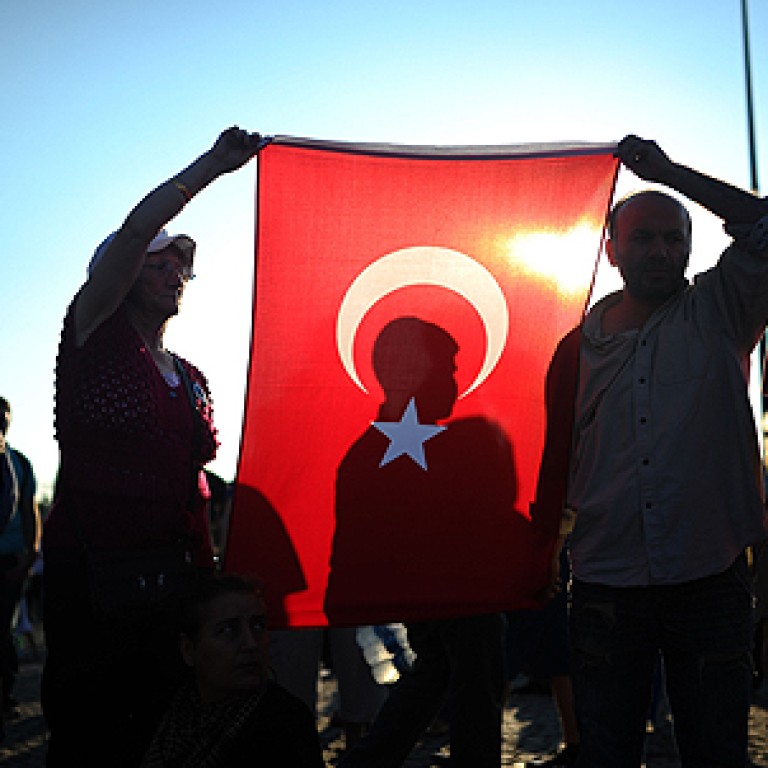
'Everywhere is Taksim!': Turkey uprising is transforming political alliances
How has a protest staged by a handful of concerned citizens over the destruction of Taksim’s Gezi Park, one of the few remaining green spaces in central Istanbul, turned into a mass movement that seeks to redefine democracy?
International pundits have praised Turkey for its economic growth in the midst of recession and upheld it as a political role model for Muslim-majority countries in the wake of the Arab Spring. Yet now for the third consecutive week, crowds gathered in squares and parks of major Turkish cities are defying the riot police and calling the leader of the AKP government party, Prime Minister Recep Tayyip Erdogan, a “sultan” and “dictator.”
How has a protest staged by a handful of concerned citizens over the destruction of Taksim’s Gezi Park, one of the few remaining green spaces in central Istanbul, turned into a mass movement that seeks to redefine democracy?
Reporting from Istanbul, we spoke with several activists partaking in an uprising that is transforming political alliances and democratic practices in Turkey.
On one hand, the accusation of authoritarian governance levelled against Erdogan stems from top-down and at times unlawful development policies of the AKP government. In this context, urban landscapes are undergoing extraordinary change with little civic participation or expert consultation.
Sule is a resident of Taksim who has been involved with the local neighbourhood association. Having seen the struggle for the preservation of the Gezi Park grow into a mass movement, Sule describes the accumulated discontent with the government’s previous urban development projects: the redevelopment of Taksim square in a way that inhibits public protest and May Day celebrations, the destruction of a nearby historical cinema to make room for a shopping mall and the clearing of street performers and animals in the Taksim area.
On other hand, the AKP’s take on development and progress comes together not just with an emphasis on conservative values but with increasing involvement of the state in the private lives of its citizens.
Onur is a photographer by profession and initiated alternative media channels in the absence of coverage by established media. He told us that recent events such as the restrictions on abortion and alcohol use especially disturbed the youth.
Onur’s remarks fit within a context of youth dissatisfaction over a proposed centralised internet filter and “clean internet” campaigns.
The Turkish government has consistently attributed the uprisings to an international conspiracy instigated by interest lobbies, foreign media and Western countries to undermine the rise of Turkey as a regional powerhouse.
However, protesters and many observers emphasise the spontaneous and exceptional nature of the protests. While the government attempts to reaffirm its political authority by referring to its third-term electoral victory, protesters are challenging the government’s majority view on democracy and the legitimacy of leadership that acts without citizen participation once elected.
Meanwhile the protests have become an experiment with direct democracy and alternative ways of belonging together.
Ruya is affiliated with a leftist organisation. During the occupation of Gezi Park, life behind the barricades amazed her as opposite ideologies and identities shared the same space to claim “respect for their lifestyles”.
The resistance movement united numerous leftist fractions, social-democrats, Kemalists, ultra-nationalists, Kurdish nationalists, LGBT groups, workers and middle-class Istanbulites. Popular images shared on social media were those of feminist Muslims and anti-capitalist Muslims joining the Gezi Park protests.
As such, the Gezi Park occupation suggested the possibility of a transformative pluralism that goes beyond the clichés of Turkey as a cultural mosaic of static identities.
Many protesters recall with yearning their Gezi Park days as a unique experience of communal life. However, Sule says that the umbrella organisation Taksim Solidarity, whose agenda was initially limited to struggles over Taksim and Gezi Park, got overburdened with the “mission to save the entire country”.
Sule welcomes the advent of neighbourhood platforms in local parks in several cities that got established after police terminated the Gezi Park occupation on the night of June 16: “Decentralisation can make this into a truly popular movement that operates in a more bottom-up fashion through neighbourhood-based organisation.”
Thus far, as Onur says and we observed ourselves, neighbourhood-based park platforms have revolved around open speaking sessions shaping new initiatives such as volunteering activities, citizen media projects, and re-engagement with party politics.
Solidarity has grown stronger in the face of the government’s excessive use of violence and uncompromising attitude.
Yet Ruya, whose organisation tries to bridge poor, marginalised neighbourhoods and the resistance at large, notes the different sentiments that characterise the park gatherings in poor neighbourhoods compared with inner-city neighbourhoods with middle-class populations: while the latter are strategising about social media use and upcoming local elections, the forums in the poor neighbourhoods “serve the venting of anger at the government. People are angrier there”.
Much of the current movement’s ability to contest the government’s authority hangs on the invention of inclusive democratic practices and formation of solidarities between different classes and identities, and across urban and rural regions.
The protests have shown the inadequacies of a political system that allows elections yet fails to open up the question of development and urban transformation in more fundamental ways to engage all those concerned and affected. Istanbul’s experiment with democracy, while inconclusive, surely holds relevance for struggles over development and urban space elsewhere.
Murat Es is a visiting assistant professor at the University of Hong Kong. Rolien Hoyng is a visiting assistant professor at Lingnan University.
